During the great cannabis land grab between 2018 and 2020, one newly public multistate operator (MSO) was decidedly more reserved in bidding for licenses in recently legalized locations. Planted firmly in Florida and laser-focused on dominating the limited-license, medical-only state, Trulieve appeared overly cautious next to its cavalier peers, many of whom were scattershot in their expansion plans, seemingly guided by a sense of inevitability around federal legalization and interstate commerce. Was Trulieve sacrificing the chance to become a national giant in favor of being a regional player?
Fast forward just three years, and the measured regional-hub strategy implemented by the company’s co-founder and chief executive officer, Kim Rivers, looks like an astute approach. The company ended 2022 with more than 180 locations across eleven states and a Generally Accepted Accounting Principles gross margin of 56 percent. Celebrating its nineteenth consecutive quarter of profitability, Trulieve closed the third quarter with $99 million in adjusted earnings before interest, taxes, depreciation, and amortization (EBITDA).
Does Rivers feel vindicated for bucking the trend and blazing her own trail?
“Vindication isn’t the word,” she said with a wry smile. “But we’re a strategy-led organization.”
Her comment highlights a key difference between Trulieve and some of its now-beleaguered competitors. Rivers is one of the few female CEOs among cannabis’s publicly traded companies, an unfortunate accolade that clearly frustrates her. And yet, in keeping with data that consistently shows companies led by women outperform those led by men, Rivers’s leadership has yielded growth and profitability—making her one of the industry’s unquestionable success stories. Fifty percent of Trulieve’s board of directors identifies as female, and the organization is engaged in a variety of diversity, equity, and inclusion initiatives through its Office of DEI and Social Impact, which aims to make the company an inclusive workplace that identifies and nurtures positive and authentic partnerships throughout the supply chain.
The daughter of a police officer and a schoolteacher, Rivers describes herself as a “recovering attorney” who specialized in mergers and acquisitions (M&A) and securities law. This experience, combined with early success as an entrepreneur and her natural grit and resilience, shaped her into a leader uniquely suited for myriad challenges. Her staunch devotion to planning—and then actually sticking with the plan—seems refreshing in a volatile industry where some operators have been accused of adopting business plans that at times can look haphazard.
We asked how her background shaped her as a leader, how Trulieve’s early focus on profitability continues to serve the company, and what it really means to be a woman leading a new, highly scrutinized industry forward.
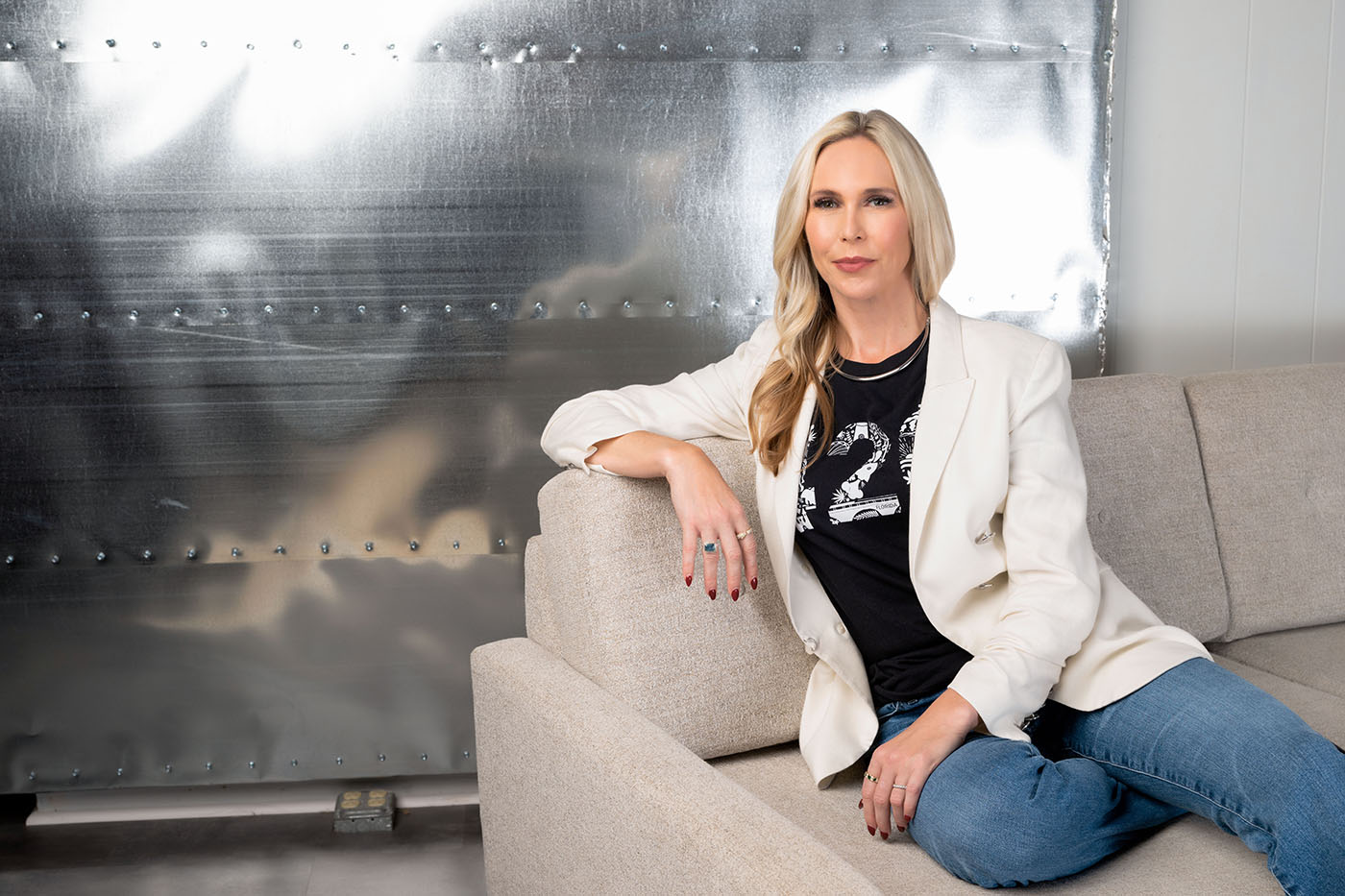
How did your upbringing influence the person you are today?
You know, I had a pretty normal childhood. My father was a police officer for twenty-five years. My mother was an elementary-school teacher. Both of them taught me the value of service, putting other people first, and working extremely hard. My dad had a very brief stint on the front lines enforcing drug laws, and that opened up the opportunity for me and him to have conversations around the war on drugs early in my life. His attitude then was there were much better uses of the police force’s time than pursuing cannabis offenses and offenders.
Growing up listening to him talk about his work certainly shaped my perspectives, particularly about social justice and criminal-justice reform. That experience has helped me be more thoughtful about the luxury we have to work in a legal industry today and more intentional about how we bring people along with us and support those that have been fighting this fight for a long time.
What did your path into corporate law look like?
I wanted to be a litigator until I realized that meant you were in a library every day for most of your early career. I like getting to know people and problem-solving, which then led me to the policy side of lawmaking. That was very interesting and I loved it, but at the time I could see being a strong female would bring challenges in that particular career path.
So I pivoted to corporate M&A and securities law for a large firm in Atlanta, and I really loved that work. It was so fast-paced! I loved learning about each business we were involved in and understanding the inner workings of those companies and how they were built. I certainly think the pattern of thinking and problem-solving you learn in that line of work is helpful in the cannabis industry. You have policy and lawmaking coupled with scaling a business at a rapid pace, oftentimes through mergers.
After practicing law, I moved back to Florida and wanted to be on the other side of the table. My goal was to jump headfirst into an entrepreneurial career, and I got involved in hospitality, tech, smaller startups, and bigger-scale businesses. I had a successful exit that, in turn, led me toward the cannabis industry.
How did your transition to cannabis come about? What did you see in the industry that made you think you could bring something unique to the table?
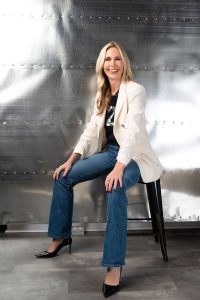
It was late 2014. Florida had had its initial lottery draw for medical licenses and was opening things up for a more competitive process. I was approached by someone I was in an entrepreneur group with who had been around me in dynamic group settings and saw how I approach business and problems. I think he saw my background as a lawyer and an entrepreneur as an important asset to the company, and he knew I’m pretty straightforward and, I’m told, have a lot of grit and guts. I don’t know if we knew at the time quite how important those things would be.
After some consideration, I agreed. We took the next six months to research the opportunity, went out to California and Colorado, and took meetings with anyone who would talk to us. Some things jumped out very early on. There were no real brands at that time, particularly not in retail where the experiences were really inconsistent and consumer preferences changed from place to place, state to state. We saw a lot of white space there where we could approach things differently.
Your background in M&A may not have seemed immediately relevant, but it has become hugely important as the company has grown and the industry has evolved.
It’s certainly been a skill set that has been helpful as we’ve grown. We’ve navigated our fair share of acquisitions, but the acquisition itself is just the first piece of the deal. Then you have to merge the companies and the cultures and focus on optimization of this joint business on a go-forward basis. For me, I love the ability to understand and get deep into another team’s approach and then have the luxury of taking the best of both worlds and melding those together to create a better organization. We look at M&A like one plus one equals three, four, or five.
Florida seems like an unlikely market for starting one of the country’s largest MSOs. What characteristics of that market prepared you for national expansion?
A lot of folks don’t realize this, but Florida is a very large state with a population of 21 million people. It historically has been a state where a lot of companies go to test out franchise concepts because, from a demographic perspective, it’s wildly different in the north, the south, the center, rural, and urban. One of our early theses was “If we can win in Florida and truly penetrate a state this diverse with a unified concept that resonates with customers, that’s a pretty good indicator that what we built is portable.” That’s one of the reasons we doubled down on Florida when others were expanding in all directions.
Florida also has offered us the ability to reach scale, not to mention all the lessons we learned along the way with that. We started with ten employees in a tomato-packing plant, and now we’re a large-scale organization with more than 7,000 employees across multiple markets. Florida taught us how to scale with a market and be comfortable operating in that startup environment in new states where you’re educating physicians, regulators, policymakers, and the public.
There are 780,000 patients enrolled in Florida’s medical program, and we have more than 3 million square feet of cultivation and processing in addition to more than 100 stores. To get to that place, there are many phases of growth along the way. So now when we go into a market like Georgia, which is very fresh and we’re one of the first two license holders, we know what that looks like because we’ve done it before.
Was confining your strategy to Florida a tough sell when other MSOs were gathering as many licenses as they could in as many states as possible?
We believe conviction in strategy is important. It’s how we were built. We had a hypothesis, and we were very focused on proving that out.
From a profitability perspective, we certainly were an early leader. In those early days, no one was talking about profitability. EBITDA was just a thing far off in the distance for these companies, but because we were a founder-funded company, we behaved very much like a traditional startup. We hadn’t taken on rounds and rounds of venture-capital dollars. We were more or less bootstrapping the business until we went public, so the idea of not being focused on a return on investment was foreign to me.
During that time you’re referring to, every company had this colorful map slide in their fundraising deck. They’d have two stores in California and claim the total addressable market of the entire population in the state. Well, that’s ridiculous. We just never subscribed to that thought process, because we believed it was fundamentally flawed.
In 2020 we outlined our expansion strategy, and that was grounded around regional hubs and our ability to apply what we had learned in Florida to a wider platform. We were very careful to wait until we were ready, because it’s easy to get swept up in the trend of the moment, and you can get overextended if you’re not grounded in strategy. Then, when the market turns or macro changes happen, you suddenly find yourself way over your skis. The way I see it is, we have shareholders, investors, and—most importantly—employees and customers who rely on us. We need to be around for the long haul.
Tell us more about the regional-hub strategy and how it has been playing out.
In practice, regional hubs mean we can gain economies of scale by having leadership teams in each of the five regions of the country. This way, when the [federal] landscape changes, we have distribution centers and hubs within centralized locations. Within those hubs, we have cornerstone markets: Florida for the Southeast, Pennsylvania for the Northeast, and Arizona in the Southwest. In Florida’s case, we’re headquartered about an hour away from the Georgia state line and about an hour and a half from Alabama. So today, with our single license in Georgia, we’re able to share resources, leadership teams, and things like packaging and fertilizer across state lines from our hub in Florida. There are lots of things we can do to get efficiency benefits, even though all the product has to be made within one state’s borders.
For the Southwest, the acquisition of [vertically integrated operator] Harvest [Health & Recreation] was key to that. It helped us establish our cornerstone market in Arizona, where we have a leading market share from a retail perspective, and we felt like we could shore up the supply chain and introduce branded products through branded retail in a strategically important market. That deal also shored up Pennsylvania, giving us an additional twelve dispensaries and a market-leading position there.
On the subject of M&A, how important is talent acquisition when you’re considering adding another company to Trulieve’s expanding footprint?
I would say one of the key things we look at is talent, particularly if it’s a new market for us. We have to be confident those folks are willing and committed to continue with the company, because we need the leadership team to help us navigate the new market. We are such a heavily regulated industry—you can’t learn the rules and regulations overnight—so keeping people in the company who understand those nuances is very important for ensuring success.
That being said, I am proud to say that as an organization, we grow talent and love to promote from within. There are lots of examples of folks who started at various levels at Trulieve and have risen through the ranks to leadership roles. In addition to this, we’ve also upgraded our team by bringing in folks with varied experience from different types of organizations. Our chief technology officer, for instance, came from Family Dollar and Lowe’s, so he has a lot of relevant experience as we think about unified commerce and what those distribution channels for cannabis might look like in the future.
Let’s talk about diversity. You are one of the few female CEOs of a publicly traded cannabis company. How does this inform the way you approach building your team?
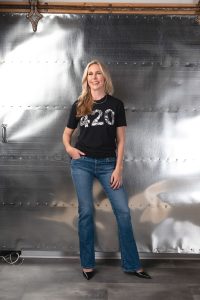
Diversity is sort of ingrained in who I am. I believe strongly—and I think the numbers and the data points reflect this—that having representation in an organization leads to better results. I think there are a lot of reasons for that, the primary one being diversity of thought. Having different life experiences and backgrounds to bring to a problem leads to more effective and less myopic or groupthink-style problem-solving, so diversity absolutely is important to me and to us as an organization.
We have to continue to walk the walk and not just talk the talk. When it comes to our hiring practices, I think the best thing we can do is have a reflective organization and then, as we promote from within, strive to have an increasingly representative leadership team.
As one of the largest companies in the industry, do you feel a responsibility to lead the industry forward?
We take that very seriously for a number of reasons. Given that I’m unfortunately one of the few women in this role, it’s not lost on me that what we do is different and is seen a little differently than [what others do].
When it comes to how we lift others up in partnerships, we take pride in really leaning in and committing to seeing things through. We’re not one of those companies that says, “We’re going to do this brand partnership, do one run of a product, put out the press release, and that’s that. Good luck to you. Hope it works out!” No, we’re continuing to work with that partner and making sure they can stand on their own, that [the partnership] is sustainable and providing a true opportunity for them and their family, because that’s the right thing to do.
Leadership isn’t just doing what’s easy but doing what’s right and doing it when folks aren’t looking. As an MSO, I always encourage us to view this industry as a varied ecosystem of big and small companies, and that makeup needs to be diverse in order for us to have an industry in which we can all participate and take pride.
Personally, I always try to remain grounded and push myself to be open to understanding a variety of viewpoints and perspectives. I try to bring light and attention not just to what’s good for Trulieve but also to what’s good for the overall ecosystem.
A Trulieve employee in Massachusetts died last year after inhaling dust while filling pre-rolls. The Occupational Safety and Health Administration (OSHA) fined Trulieve but exonerated the company of direct responsibility. How has that tragedy impacted the business and how you view the health and safety of your employees?
The health and safety of our more than 7,000 employees is the most important thing to our business and to me personally. We are proud to provide our team members with a safe and secure work environment and already have many protections in place. However, as part of a relatively new industry, we constantly seek out new technologies and processes that can be implemented to keep us at the forefront of workplace safety.
As a leader in the industry, Trulieve is committed to developing best practices that are applicable to our team and workers across the industry. We fully intend to continue our work with state and federal regulators, which includes OSHA, to ensure the health and safety of all workers in this growing industry. I believe Trulieve is a great place to work, and I will do everything possible to keep it that way.
Trulieve often mentions its responsibility to customers. How does that commitment play out in practice?
We see it very much as an iterative process. Our customer base is ever-evolving. There are new folks finding cannabis every day, so it’s really important for us not to remain stagnant. Having a culture of creating feedback loops, actively listening, and being purposeful in really understanding who our customers are is really important for us.
We take data very seriously too, and we now utilize a consumer-data platform where we’re constantly learning about our customers through their buying patterns and their responses to messages we put out. The level of hyper-personalized targeting we can do today really helps our customers feel we’re seeing them, we understand who they are, and we’re speaking more directly to them. Our insights have improved significantly, and there’s so much more we’re going to be able to do with that over time.
How is Trulieve looking at the leaner, more challenging year ahead? What are your thoughts about the lessons and opportunities that always accompany sluggish markets?
I think we’re going to put a big emphasis on continuing to understand our customers in this changing environment. As a country, we’ve been going through a pivot for the past six months, and inflation is becoming more real and more tangible. Lots of consumers are noticing their dollars aren’t going as far as they used to, and that affects the choices we make every day. Cannabis certainly isn’t immune to that.
The reality is business goes through cycles. Cannabis has just had an incredibly positive cycle, and I think now that consumer behavior is in flux, this is an incredible opportunity to learn about how that flux affects buying patterns and preferences. We’re leaning in and trying to better understand our customers and be more productive in this cycle, and I think that is going to be a key differentiator and will be super important in our thought process from now until we emerge from this cycle.
The reality is there’s price compression happening, and that leads us to some opportunities—including consolidation in the industry. Unfortunately, I think we’re going to see some businesses that are forced to reposition or close. And for us, as a company that has the strength to weather the changes, we expect to emerge from this cycle in an even better position than we are in today.
Photography by Kira Derryberry





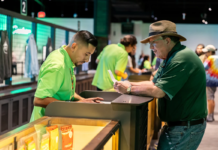

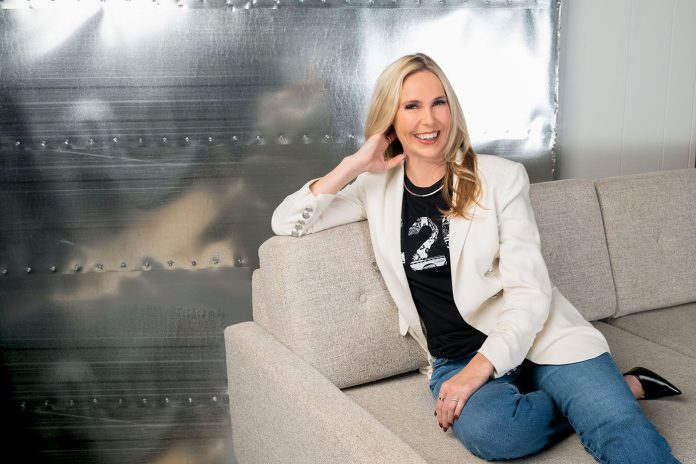


[…] Kim Rivers, chief executive officer at Florida-based Trulieve, quickly pointed out how home-grow provisions were not allowed in Amendment 3 after the Florida Supreme Court ruled amendments must be constrained to single issues.“While we could not include [home growing] in this amendment due to Florida Supreme Court single-subject rules (which [DeSantis] knows), this is absolutely something we can support via implementation in the legislature, and with the governor’s support, we can get it done,” she said. […]
[…] deep in our core markets and jettisoning non-contributive assets,” said Chief Executive Officer Kim Rivers. “We remain fully confident in our strategic position and the long-term prospects for the […]